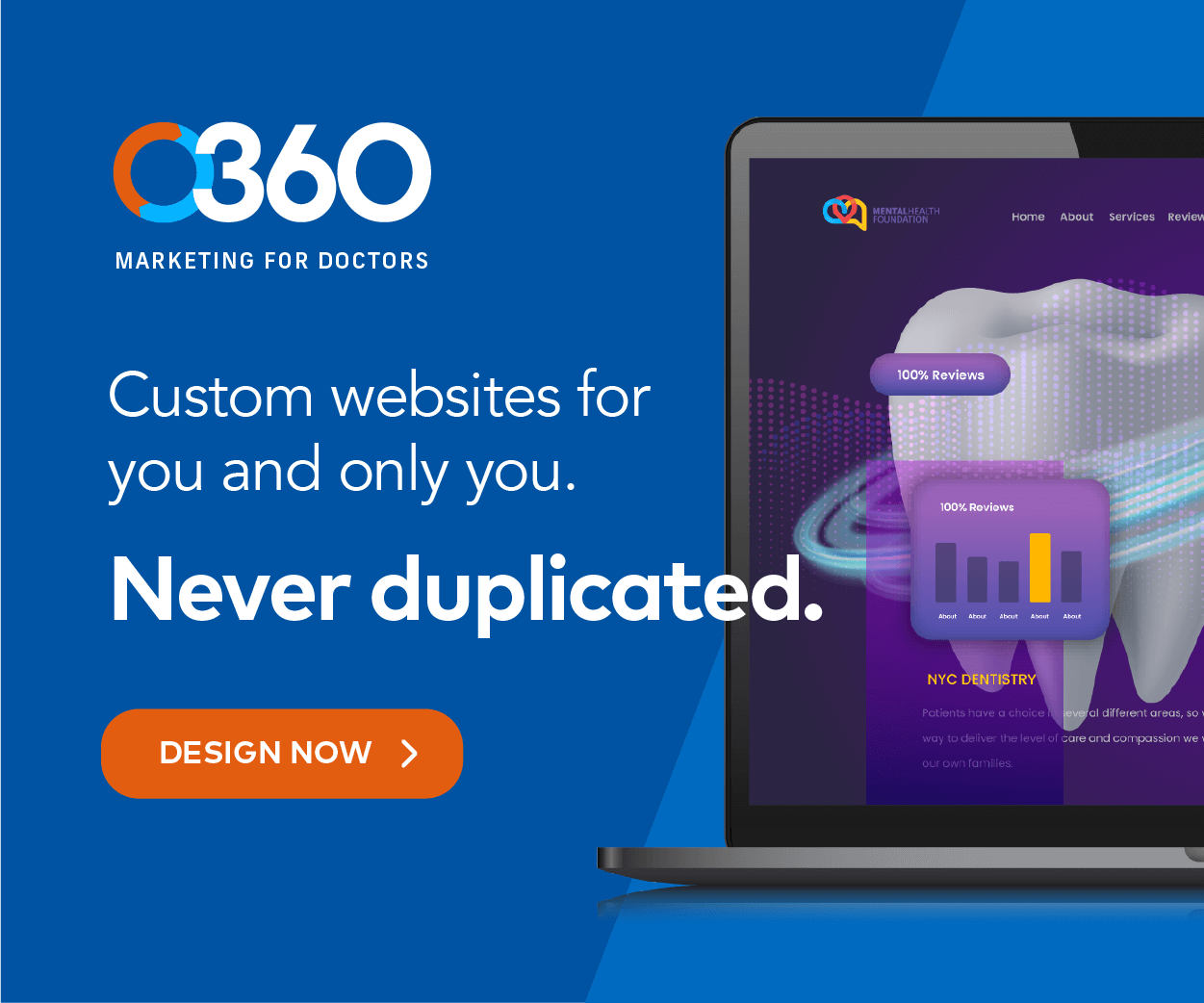For doctors and healthcare providers looking to improve their website retention, responsive web design is crucial in today’s digital age. Over half of people browsing the internet are browsing from their mobile devices, vital for those looking to access information or services easily. They want a website that aids them in finding a practitioner, scheduling an appointment, or getting answers to health-related queries. Optimizing your website for mobile goes beyond making it convenient; it’s about creating an accessible, user-friendly website that helps patients receive the care they need.
When a website uses responsive web design, patients are more likely to trust and value the business they’re connecting with and are more likely to become new or returning patients. But what does responsive web design mean? As medical marketers, we’re here to provide insight into this important, valuable trend in website development and why medical practices need to use a mobile-friendly design for future patients.
What Does Responsive Web Design Mean?
When someone visits a medical website on their phone, they usually search for specific information quickly. They may want to find a specific doctor, make a quick appointment, or get answers to health questions. Reading on a small screen can be difficult. If a website cannot adjust and adapt to mobile devices, then there’s a higher probability of your users retreating to your competitors for their needs. A mobile-friendly website solves that issue, helping users receive the information they need without hassle.
Responsive web design refers to a web design technique that ensures your website is functional on mobile devices and a PC. As screen sizes can vary across different devices, having a medical website that can adapt to the layout of the user’s phones can ensure that your website’s text is readable and easy to navigate. Responsive web design allows your website to be visible and interactive across all mobile devices and provides the best possible experience for your patients.
What Makes a Website Mobile Friendly?
How your website looks and feels is vital for those looking to develop it, especially on smaller screens. Responsive web design can adjust their appearance and function based on the device they’re being viewed on. This measure ensures that users can view the website on various devices, including desktop monitors and mobile phones, for the information they need from your services.
Key Features of Integrating Responsive Web Design
Because reading on a smaller screen can be tough for most people, especially if your target audience contains older generations or people with disabilities, then the contents of your website need to be mobile friendly to better engage with the audience you seek. Some of the key features of responsive web design include the following:
- Readable Text Size: Text appropriately sized for mobile screens is essential, allowing users to zoom in to read the content seamlessly. A text size appropriate for these devices can enhance the overall appeal, contribute to responsive web design, and help your website appear trustworthy and professional.
- Touchscreen Compatibility: A touchscreen-capable website means that interactive elements such as call-to-action buttons, hyperlinks, and other elements can be interacted with on mobile devices. This ensures that your users can select and interact with features without issues.
- Intuitive Navigation: An intuitive navigation system allows users to find what they’re searching for without experiencing hiccups on your website. This includes hamburger menus, clear headings, and call-to-action buttons. With navigation built with responsive web design in mind, your patients are more likely to stay longer and engage with your medical content.
- Website Speed: Websites are expected to load fast now more than ever. A mobile-friendly website should meet the expectations of today’s users, even for those with low-speed internet. A slow-moving website can deter visitors and negatively impact your website’s search rankings. Optimizing your images, reducing server responses, and leveraging browser caching can help boost your website’s speed and enhance your patients’ engagement with your services.
How To Improve The Mobile User Experience
Incorporating the key components of responsive web design into your website impacts its aesthetic, content, and structure. For those whose websites don’t meet these requirements, it can often result in a substantial reduction in the website’s core functions.
Good UX: Design and Aesthetics
The user experience and good design go hand-in-hand, and how a website looks and feels to the patient is essential for those looking at smaller screens. Design concepts such as using white space on a page can ensure that your website looks clean and easy to read, and incorporating elements such as bullet points and headers can make it easier for your patients to search through and read the content you provide. Images that are compressed and optimized for a mobile-friendly experience, attentive color schemes, and a good flow format are just some of the components that make a website successful in retaining new patients.
Technical Optimization Strategies
Increasing your website’s loading speed and functionality can be performed with shortcuts. Compressing images helps optimize your website’s load speed, and using video hosting services such as YouTube or Vimeo can help your website open up fast. All important information should be easy to find, not just for your patient’s experience but also for search engine optimization. Search engines like Google rank medical websites based on a clear layout, hyperlink functionality, and relevance of the information on your website according to what your users are searching for with their medical concerns or needs. This makes the website nicer and helps more people find it online.
Enhancing Functionality
Improving your website’s functionality means making all essential contact information and forms easy to fill out and use when your website appears on a mobile device. A website that doesn’t provide these features can impact how users interact with it. Some ways your website’s functionality can be enhanced include reducing the length of forms, enlarging the space for typing, and using buttons and links that are large enough to tap without interfering with other aspects of the website’s format and design.
Content Optimization and SEO
Another facet that’s largely ignored by many websites is how the content is organized and structured. Even if the content contains valuable information, SEO keywords and structuring the content throughout the website’s format can help your website stand out among competing websites. Using structured data can provide extra features in search results, such as important health information and FAQ answers to help your website appear in Google searches.
Retaining New and Returning Patients
The key to any successful website is keeping patients interested in and returning for your services. One way to ensure this happens is by showcasing reviews and stories that empathize and humanize your practice. Additionally, having forms on the website that give easy access to appointments and newsletters can keep your patients engaged and connected to your practice.
Accessibility and Compliance
Testing your website on different mobile devices ensures that it meets accessibility standards. Ensuring that your website is accessible on multiple devices means that your practice can better cater to patients requiring your services, regardless of their disabilities. An accessibility feature ensures that everyone can access the healthcare information they need.
How Will Mobile Friendly Websites Impact Marketing?
Making a website that works great on mobile isn’t just a one-time thing. It needs regular check-ups and updates, just like healthcare itself. As technology changes and evolves, so do people’s habits and expectations. Medical practices need to keep an eye on these trends and be ready to adapt. This could mean updating the design, adding new features, or ensuring the website loads quickly on all devices.
Ultimately, responsive web design ensures that anyone looking for health information or services can find what they need, understand it easily, and take action without stress. This can greatly affect how people view healthcare and lead to better health outcomes. After all, the easier it is to get healthcare, the more likely people will use it when needed. By making their websites user-friendly, fast, and easy to find, medical practices can ensure they reach out to everyone needing their services.
Contact Optimized360 Today For Valuable, Mobile Friendly Web Design
Website design is about making it easier for everyone to get the healthcare they need when they need it. If you want to ensure your patients have the best experience online, contact Optimized360. Our medical marketing experts know how to make your website shine on any device, making it easy for your patients to use. For more information about our services and offers, contact Optimized360 and make sure your practice is ready for the future.














